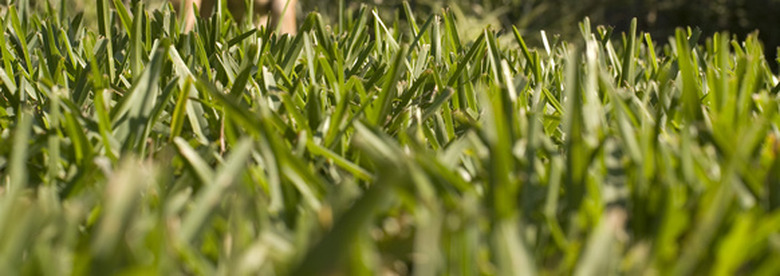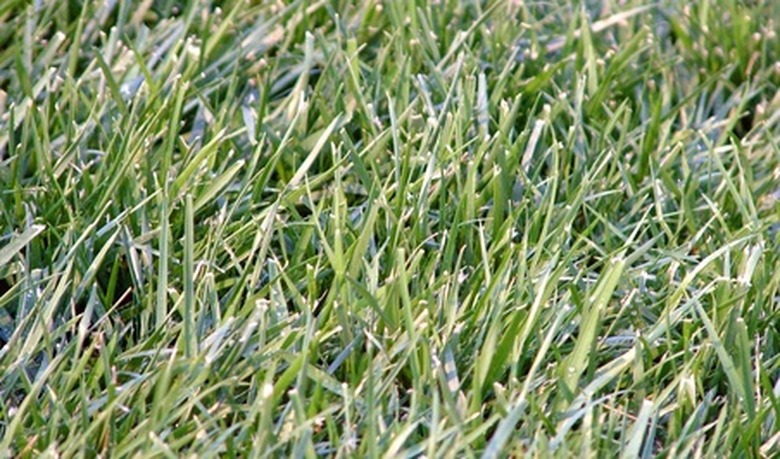Texas Grass Types
The types of grasses that grow well in Texas depend on the part of the state and the season of the year. With lawns, timing is everything. It is better to grow most grasses in direct sunlight than shade for a stronger root, but there are exceptions. Understand the watering, nitrogen, environmental and fertilizer requirements of your grass before seeding, sodding, plugging or sprigging.
Kentucky Bluegrass
Kentucky bluegrass is a cool season grass that is limited to the panhandle area of the state and is grown by irrigation. It has a boat-shaped tip and can grow 18 to 24 inches tall. When the grass grows to its natural height, the flowers heads are blue, thus the name bluegrass.
Carpet Grass
Carpet grass is a warm season perennial that grows well in the Texas coastal areas. Carpet grass is dense and therefore needs plenty of wet and low-fertility land, which causes it to grow quickly. It does not do well in dry areas, salty marshes or in shade. Though it needs less to grow on, it is very particular about the kinds of conditions that will keep it alive.
Ryegrass
Ryegrass is a fall and winter grass that holds up well year-round in most cases. It is used on golf courses, parks and home lawns, and is often mixed with bluegrass to cover sports fields in turf. There are two types of ryegrass, annual and perennial. The perennial is for year-round coverage, while the annual is seeded yearly and lives for only one season, during the winter.
St Augustine Grass
The St. Augustine grass thrives in coastal areas where there is plenty of heat and little shade. It is a coarse-leaf grass that grows moderately fast but is easy to control. Since it is a sandy soil turf, it requires more nitrogen than grasses that grow well in clay soil. This grass is not grown by seeding, but by sodding or plugging.
Tall Fescue and Centipede Grass
The tall fescue grass of northern Texas requires plenty of shade and extra water during extreme drought and heat periods. It is called a "bunch-type" grass because it grows in a bunch from its crown and should not be mixed with bluegrass. Centipede grass, which came to America from China, is known for its natural resistance to weeds. This southern Texas grass is moderately shade-tolerant, and suffers under harsh, freezing conditions.
Other Types of Texas Grasses
Buffalograss, Bermuda grass, Tifway, fine fescue and zoysia, along with prairie buffalo grass, the only grass native to Central Texas, are other grasses that may be found growing in the state. Compared to the many species of grasses that exist, Texas is limited in selections of grasses that will grow well.

